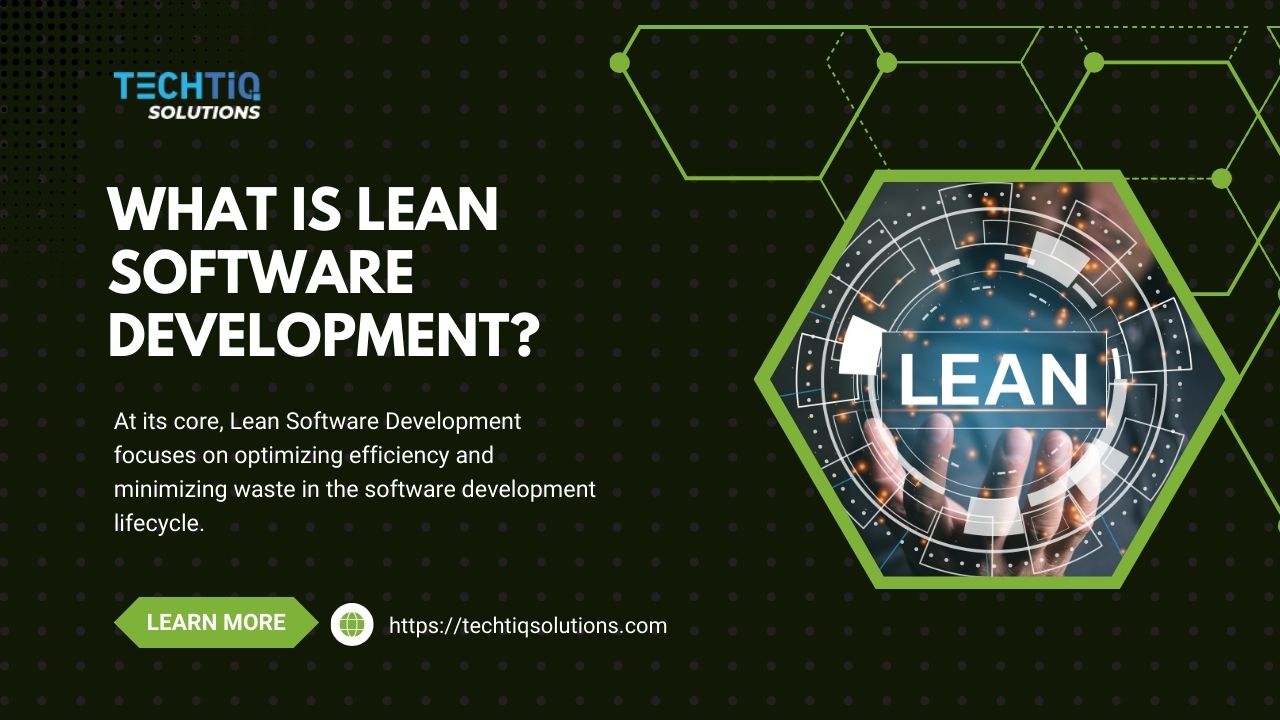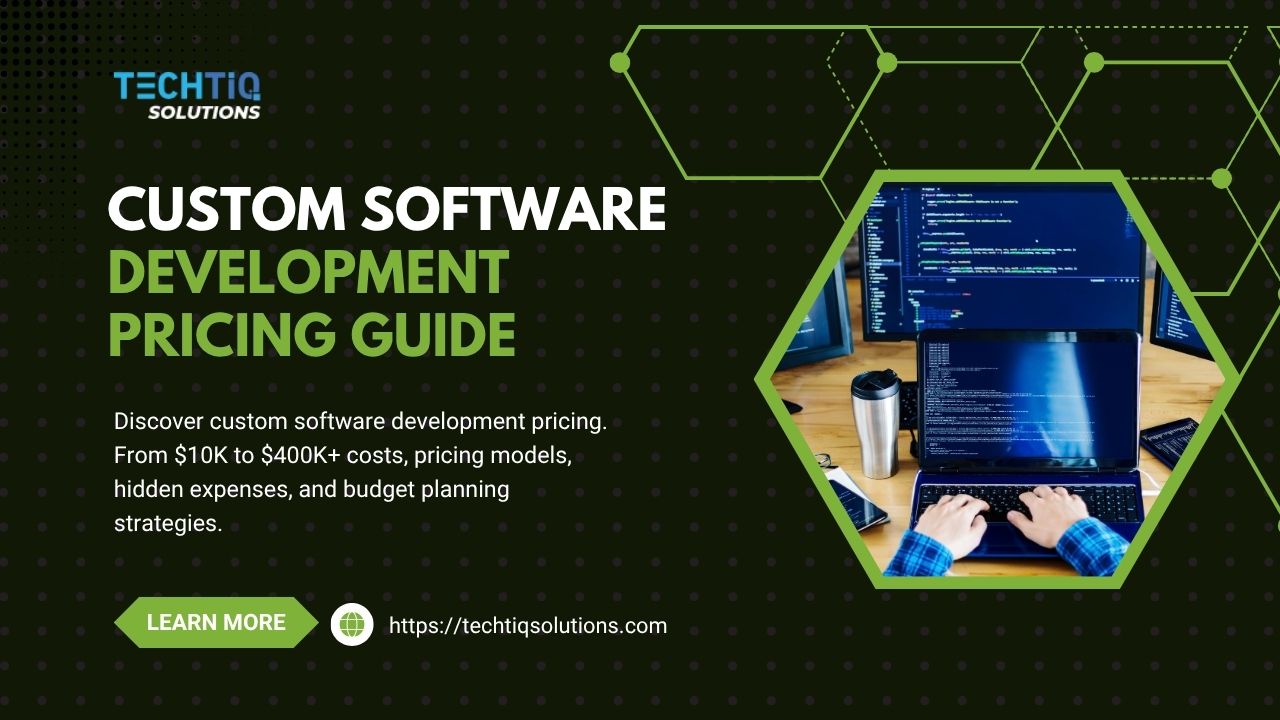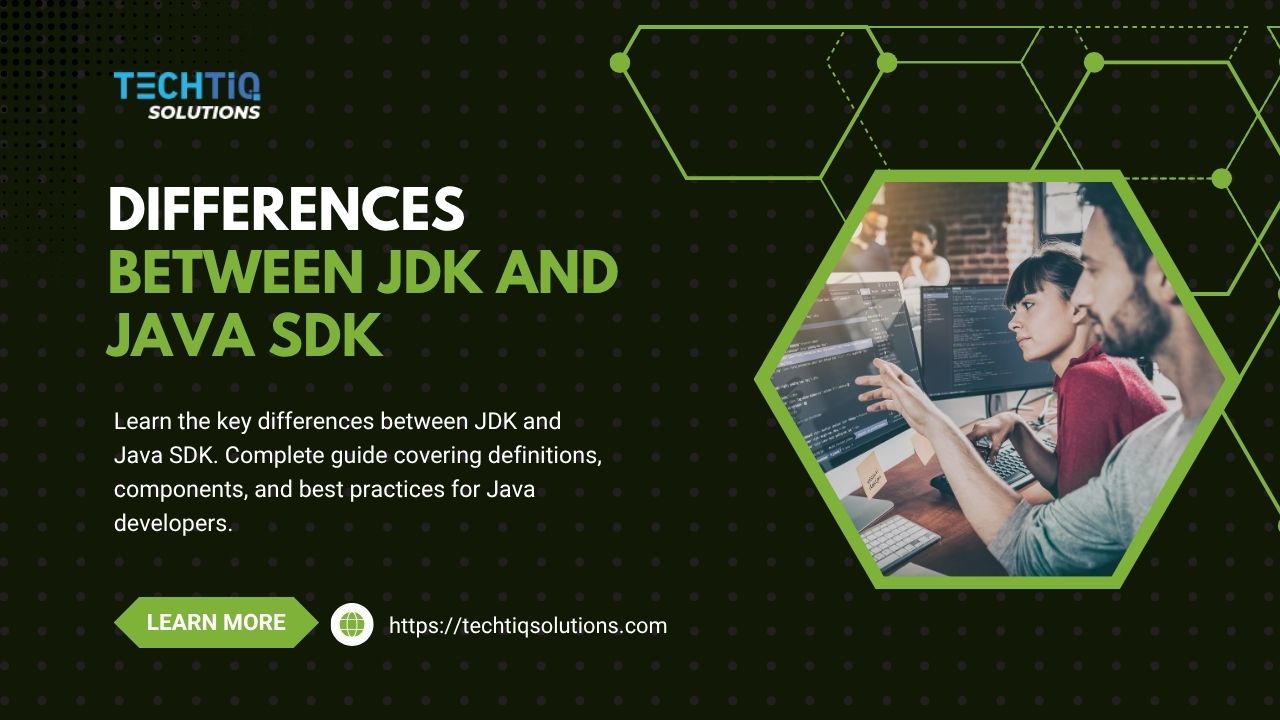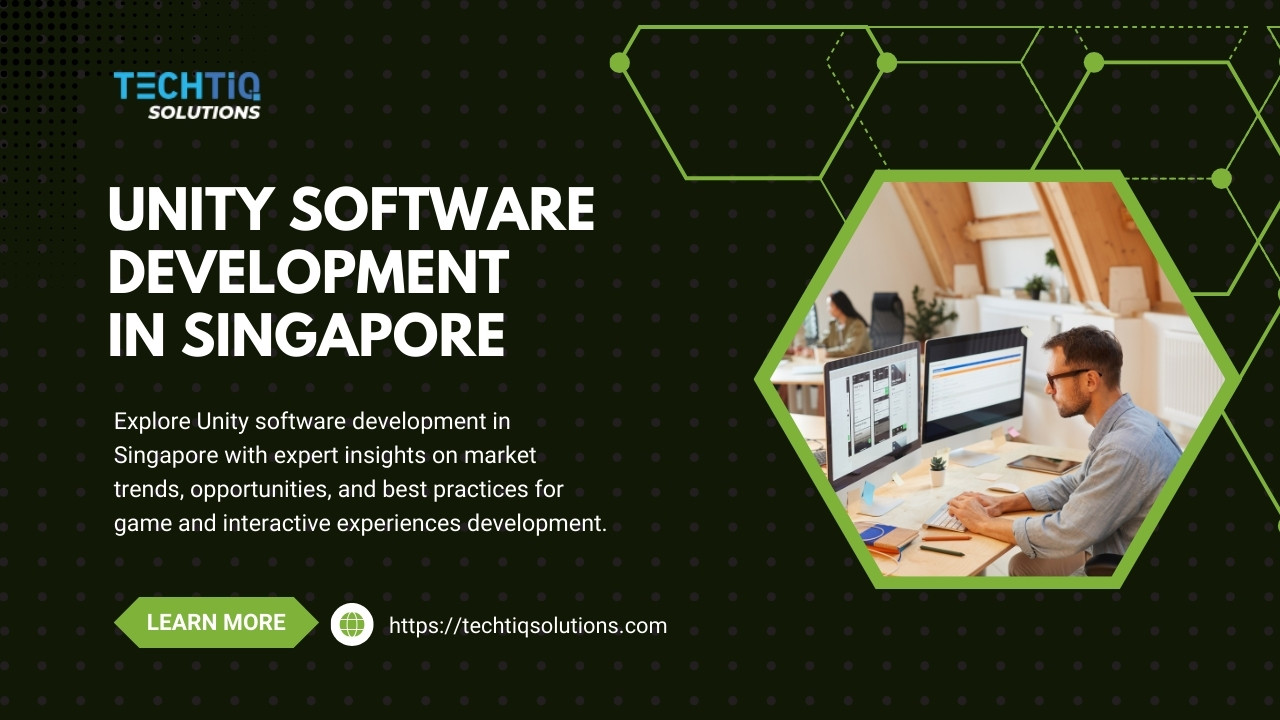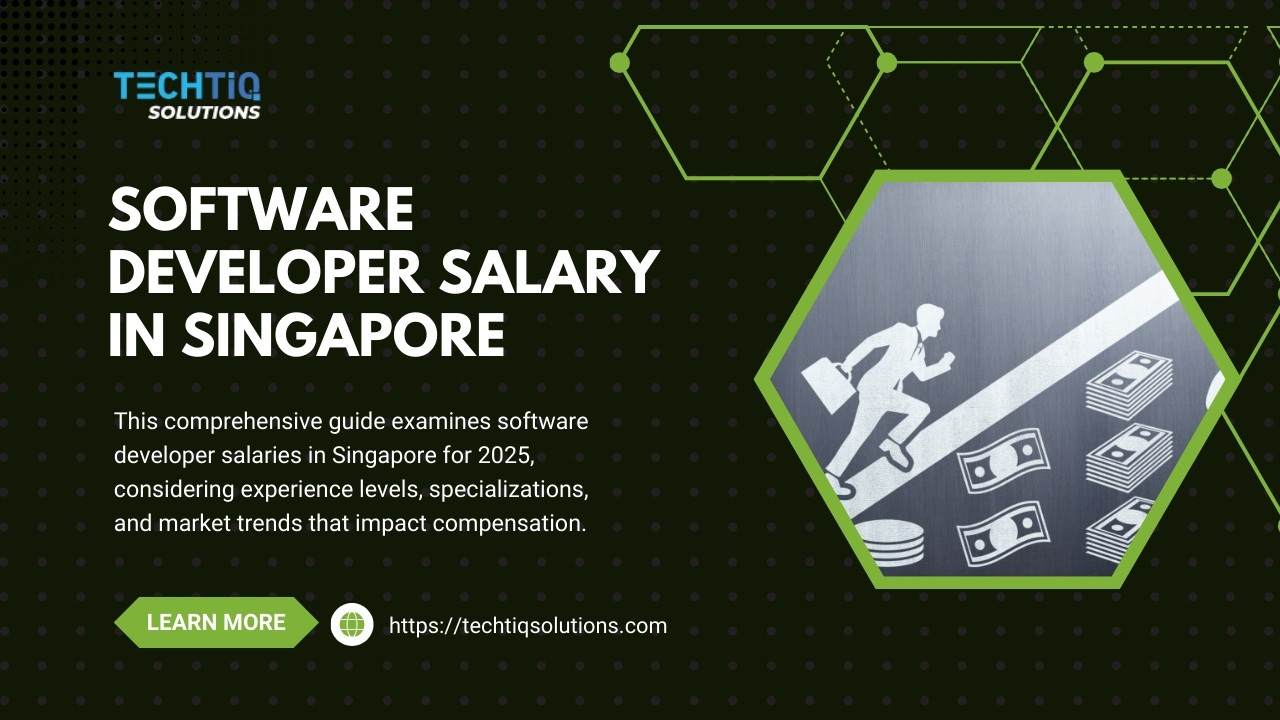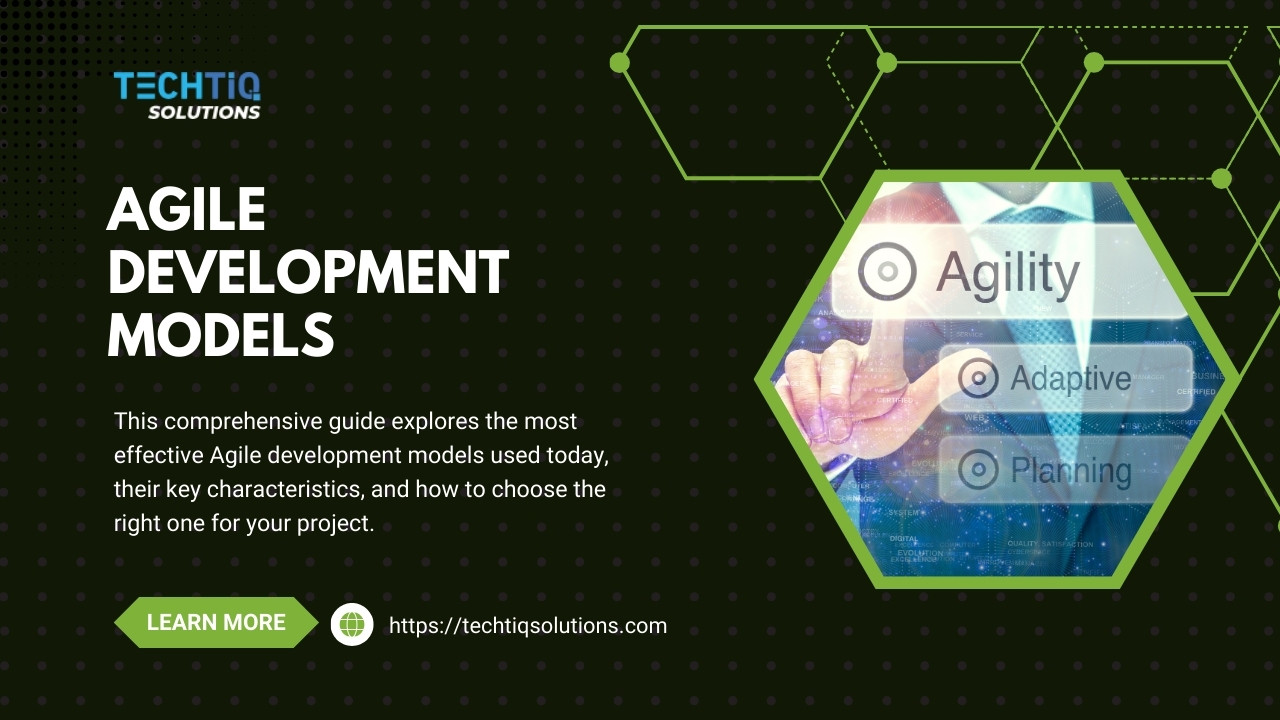Ever wondered how some software development teams consistently deliver high-quality products faster than their competitors? The secret might be Lean Software Development (LSD) – a methodology that eliminates waste and focuses on delivering maximum value to customers.
In this comprehensive guide, we’ll explore what Lean Software Development is, its principles, benefits, and how a software development outsourcing company like TechTIQ Solutions implements it to build better software efficiently.
Key Takeaways
-
Lean Software Development is a methodology that adapts lean manufacturing principles to software development, focusing on eliminating waste and maximizing customer value
-
The seven core principles of LSD include eliminating waste, amplifying learning, deciding as late as possible, delivering fast, empowering the team, building integrity, and seeing the whole
-
Implementing Lean Software Development can result in faster delivery times, reduced costs, higher quality products, and improved team satisfaction
-
LSD complements other methodologies like Agile and DevOps, creating hybrid approaches tailored to specific project needs
-
Real-world case studies show how Lean Software Development principles have helped companies like TechTIQ Solutions deliver successful projects
What is Lean Software Development?
Lean Software Development (LSD) is an agile methodology that applies the principles of lean manufacturing to the software development process. Originally derived from the Toyota Production System, this approach was adapted for software development by Mary and Tom Poppendieck in their 2003 book “Lean Software Development: An Agile Toolkit.”
At its core, Lean Software Development focuses on optimizing efficiency and minimizing waste in the software development lifecycle while delivering maximum value to the end user. It encourages teams to identify and eliminate activities that don’t contribute directly to the final product’s value, resulting in a more streamlined and effective development process.
The Origins of Lean Thinking
The concept of “lean” originated in manufacturing, specifically at Toyota in Japan after World War II. Faced with resource constraints, Toyota developed a production system that minimized waste and maximized value. This system, known as the Toyota Production System (TPS), laid the groundwork for what we now call lean manufacturing.
The principles of lean thinking were introduced to the Western world through James Womack and Daniel Jones’s 1996 book “Lean Thinking.” It wasn’t until the early 2000s that these concepts were thoroughly adapted for software development by Mary and Tom Poppendieck.
How Lean Differs from Traditional Software Development
Traditional software development often follows a waterfall approach, where each phase (requirements, design, development, testing, deployment) occurs sequentially. This can lead to lengthy development cycles and difficulties adapting to changing requirements.
Lean Software Development, on the other hand, emphasizes:
-
Continuous delivery of small, incremental changes
-
Getting fast feedback from users
-
Reducing work in progress
-
Eliminating unnecessary features and processes
-
Empowering teams to make decisions
Unlike traditional methods, Lean focuses on optimizing the entire value stream rather than just individual components. It views software development as a flow of value to the customer, continuously seeking to improve that flow.
The 7 Principles of Lean Software Development
Lean Software Development is guided by seven key principles that form the foundation of this methodology. Let’s explore each one in detail.
1. Eliminate Waste
In Lean thinking, waste is anything that doesn’t add value to the end product from the customer’s perspective. In software development, common forms of waste include:
-
Partially done work
-
Extra processes
-
Extra features
-
Task switching
-
Waiting
-
Motion (unnecessary movement of people or information)
-
Defects
By identifying and eliminating these forms of waste, teams can focus their efforts on activities that truly add value to the product.
2. Amplify Learning
Software development is a knowledge-creation process. Lean recognizes this and emphasizes continuous learning and improvement. This principle encourages:
-
Short feedback loops
-
Frequent iterations
-
Testing assumptions
-
Learning from mistakes
-
Knowledge sharing within teams
Tools like prototyping, spike solutions, and set-based development help teams learn faster and make better decisions.
3. Decide as Late as Possible
In a rapidly changing environment, keeping options open allows for more informed decision-making. This principle suggests:
-
Delaying irreversible decisions until the last responsible moment
-
Making decisions when you have the most information
-
Using strategies that allow for change
-
Building adaptable systems
By deciding as late as possible, teams can incorporate the latest information and respond to changing market conditions.
4. Deliver as Fast as Possible
Speed creates a competitive advantage and facilitates better feedback. Faster delivery enables:
-
Quicker learning cycles
-
Faster response to market changes
-
Earlier return on investment
-
Better customer satisfaction
Techniques like limiting work in progress, breaking work into small batches, and automating repetitive tasks help teams deliver faster.
5. Empower the Team
The people doing the work know best how to improve it. This principle focuses on:
-
Respect for people
-
Self-organizing teams
-
Decentralized decision-making
-
Local responsibility
-
Leadership rather than management
Empowered teams are more motivated, innovative, and responsive to challenges.
6. Build Integrity In
Integrity in software means creating systems that are cohesive, maintainable, and adaptable. This involves:
-
Refactoring to improve code quality
-
Testing throughout the development process
-
Continuous integration
-
Simple design
-
Technical excellence
Building integrity in from the start prevents the accumulation of technical debt and ensures sustainable development.
7. See the Whole
Optimizing parts in isolation often sub-optimizes the whole system. This principle encourages:
-
Systems thinking
-
Understanding the entire value stream
-
Cross-functional collaboration
-
End-to-end optimization
-
Measuring what matters
By seeing the whole, teams can make better decisions that improve the overall system rather than just individual components.
Implementing Lean Software Development
Adopting Lean Software Development requires more than just understanding its principles; it involves practical implementation strategies and tools.
Lean Software Development Practices
Several key practices support Lean implementation:
-
Value Stream Mapping: Visualizing the flow of value through the development process to identify bottlenecks and waste.
-
Kanban Boards: Using visual management tools to limit work in progress and optimize flow.
-
Continuous Integration/Continuous Delivery (CI/CD): Automating the build, test, and deployment process to deliver changes quickly and reliably.
-
Test-Driven Development (TDD): Writing tests before code to ensure quality is built in from the start.
-
Daily Stand-ups: Brief daily meetings to synchronize activities and identify obstacles.
-
Retrospectives: Regular reflection meetings to identify improvement opportunities.
Tools and Techniques
Several tools and techniques support Lean implementation:
-
A3 Problem Solving: A structured approach to problem-solving that fits on a single A3-sized paper.
-
5 Whys: A technique for identifying the root cause of problems by asking “why” repeatedly.
-
Visual Management: Using visual cues to communicate status and identify issues.
-
Limit WIP (Work In Progress): Restricting the amount of work in progress to improve flow and focus.
-
Pull Systems: Allowing work to be pulled into the system based on capacity rather than pushed based on schedule.
Common Challenges and Solutions
Implementing Lean isn’t without challenges:
-
Challenge: Resistance to change
-
Solution: Start small, demonstrate value, and involve the team in the transformation
-
-
Challenge: Difficulty identifying waste
-
Solution: Use value stream mapping and involve people from different roles to gain diverse perspectives
-
-
Challenge: Balancing speed with quality
-
Solution: Build quality in through practices like TDD, pair programming, and continuous integration
-
-
Challenge: Measuring progress
-
Solution: Develop meaningful metrics that focus on value delivery and flow, not just activity
-
Lean Software Development Case Study: TechTIQ Solutions
TechTIQ Solutions has successfully implemented Lean Software Development principles in various projects. Here’s a look at how they applied Lean principles to deliver exceptional results for one of their clients.
The Mobile Team Manager Project
TechTIQ Solutions was tasked with developing the Mobile Team Manager, a comprehensive field and office management suite for service-based businesses. The client needed a solution that could manage users with different roles and permissions, control licenses and documents, handle interactive online forms, and provide real-time data updates.
The Challenge
The client required a complex system with multiple features:
-
User and role management
-
License and document control with expiration tracking
-
Dynamic paper forms
-
Team, job, shift, resource, and asset management
-
Scheduling capabilities
-
Custom reporting
-
Real-time chatting and data updates
-
Cross-platform support for both web and mobile
The system needed to be user-friendly for non-technical staff while handling complex scheduling and resource allocation.
Lean Approach
TechTIQ implemented several Lean principles:
-
Eliminate Waste: They identified and removed unnecessary features by focusing on the core needs of field management.
-
Amplify Learning: The team worked closely with the client, conducting regular demonstrations and gathering feedback to improve their understanding of the business requirements.
-
Deliver Fast: Using technologies like React Native for cross-platform development and implementing offline mode with SQLite, they ensured rapid delivery of working software.
-
Empower the Team: TechTIQ organized their team around the multiple tenancy structure, giving them autonomy to make decisions within their areas of expertise.
-
Build Integrity In: They implemented automated testing with Selenium and used Jenkins for continuous integration to maintain quality throughout development.
The Results
The Lean approach yielded impressive results:
-
Successfully delivered a complex system that met all client requirements
-
Reduced development time by focusing on high-value features first
-
Improved quality through continuous integration and automated testing
-
Created a user-friendly interface that non-technical users could easily navigate
-
Built a flexible system that could be adapted to different industries and business needs
This case study demonstrates how Lean Software Development principles can be applied to deliver complex systems efficiently while maintaining high quality and meeting client expectations.
Benefits of Lean Software Development
Implementing Lean Software Development offers numerous advantages for teams and organizations.
Faster Time to Market
By eliminating waste and optimizing the flow of work, Lean teams can deliver software more quickly:
-
Reduced cycle time from concept to delivery
-
Faster feedback loops
-
More frequent releases
-
Quicker response to market changes
Reduced Costs
Lean practices help reduce costs in several ways:
-
Less rework due to built-in quality
-
Fewer unused features
-
More efficient use of resources
-
Reduced overhead from unnecessary processes
-
Less technical debt
Higher Quality Products
Lean emphasizes building quality in from the start:
-
Fewer defects reaching production
-
More sustainable codebase
-
Better user experience
-
More reliable systems
-
Higher customer satisfaction
Improved Team Morale and Productivity
Lean’s respect for people philosophy contributes to:
-
Greater autonomy and empowerment
-
More meaningful work focused on value
-
Reduced frustration from waste and impediments
-
Continuous learning and improvement
-
Better collaboration
Enhanced Adaptability
Lean teams can respond more effectively to change:
-
More flexible architecture and design
-
Faster response to customer feedback
-
Better ability to pivot when necessary
-
Reduced risk through incremental delivery
-
Improved market responsiveness
Comparing Lean with Other Development Methodologies
Understanding how Lean relates to other popular methodologies helps put it in context.
Lean vs. Agile
While Lean and Agile share many values, they have different origins and focuses:
|
Aspect |
Lean Software Development |
Agile Development |
|
Origin |
Toyota Production System |
Manifesto for Agile Software Development |
|
Primary Focus |
Eliminating waste and optimizing flow |
Responding to change and customer collaboration |
|
Key Concept |
Value stream |
Iterative development |
|
Decision Making |
Decide as late as possible |
Progressive elaboration |
|
Approach to Change |
Build adaptable systems |
Embrace change as a competitive advantage |
In practice, many teams combine elements of both approaches, using Lean thinking to optimize their Agile practices.
Lean vs. DevOps
DevOps and Lean complement each other well:
|
Aspect |
Lean Software Development |
DevOps |
|
Focus |
Optimizing the entire value stream |
Breaking down silos between development and operations |
|
Key Practices |
Value stream mapping, limiting WIP |
Continuous integration, infrastructure as code |
|
Culture |
Respect for people, continuous improvement |
Collaboration, shared responsibility |
|
Goals |
Eliminate waste, deliver value |
Faster delivery, more reliable systems |
Many organizations implement both Lean and DevOps principles together to create more efficient and reliable software delivery pipelines.
Lean vs. Six Sigma
While both Lean and Six Sigma aim to improve processes, they have different approaches:
|
Aspect |
Lean Software Development |
Six Sigma |
|
Primary Goal |
Eliminate waste and improve flow |
Reduce variation and defects |
|
Approach |
Value stream optimization |
Statistical process control |
|
Improvement Method |
Continuous small improvements |
DMAIC (Define, Measure, Analyze, Improve, Control) |
|
Tools |
Value stream mapping, Kanban |
Statistical analysis, process capability studies |
Some organizations combine these approaches into “Lean Six Sigma,” using Lean to remove waste and Six Sigma to reduce variation.
Real-World Success Stories
Beyond TechTIQ’s case study, many organizations have successfully implemented Lean Software Development.
Success in Enterprise Software Development
A major enterprise software company applied Lean principles to their development process, resulting in:
-
40% reduction in development cycle time
-
60% decrease in post-release defects
-
Improved customer satisfaction scores
-
More predictable delivery schedules
-
Better alignment with business objectives
They achieved this by mapping their value stream, eliminating handoffs between teams, implementing continuous integration, and establishing a pull system for work.
Success in Startup Environments
A tech startup used Lean principles to rapidly iterate on their product:
-
Delivered minimal viable product (MVP) in half the originally estimated time
-
Gathered valuable user feedback early in the process
-
Pivoted product direction based on user insights
-
Avoided wasting resources on unwanted features
-
Achieved product-market fit more quickly
Their approach included setting clear hypotheses, building just enough to test those hypotheses, measuring results, and making data-driven decisions about next steps.
Tools and Resources for Lean Software Development
If you’re interested in implementing Lean Software Development, these resources can help:
Recommended Books
-
“Lean Software Development: An Agile Toolkit” by Mary and Tom Poppendieck
-
“Implementing Lean Software Development: From Concept to Cash” by Mary and Tom Poppendieck
-
“The Lean Startup” by Eric Ries
-
“Lean from the Trenches” by Henrik Kniberg
-
“This is Lean: Resolving the Efficiency Paradox” by Niklas Modig and Pär Åhlström
Software Tools Supporting Lean Development
Several tools can support Lean implementation:
-
Kanban boards: Trello, Jira, Azure DevOps
-
Value stream mapping tools: Lucidchart, Value Stream Mapper
-
Visual management: Miro, Mural
-
Continuous integration/delivery: Jenkins, GitLab CI, GitHub Actions
-
Test automation: Selenium, Jest, JUnit
Training and Certification
For those seeking formal training:
-
Lean-Kanban University offers various Kanban certifications
-
The Lean Enterprise Institute provides workshops and courses
-
Scaled Agile Framework (SAFe) incorporates Lean principles and offers certifications
-
Many consulting firms offer customized Lean training programs
Common Pitfalls and How to Avoid Them
When implementing Lean Software Development, be aware of these common pitfalls:
Focusing on Tools Rather Than Principles
Pitfall: Implementing Lean tools without understanding the underlying principles.
Solution: Start with the principles and values. Use tools to support those principles rather than as an end in themselves.
Applying Manufacturing Practices Directly to Software
Pitfall: Trying to apply manufacturing practices directly to software development without adaptation.
Solution: Understand the unique characteristics of software development and adapt Lean concepts accordingly.
Partial Implementation
Pitfall: Implementing only some Lean practices while ignoring others, creating imbalance.
Solution: Pursue a holistic implementation, recognizing how different Lean principles reinforce each other.
Measuring the Wrong Things
Pitfall: Using metrics that encourage local optimization or reward the wrong behaviors.
Solution: Focus on measures that reflect value delivery and flow, such as lead time, quality, and customer satisfaction.
Neglecting the Human Aspect
Pitfall: Implementing Lean as a purely technical approach without addressing cultural aspects.
Solution: Emphasize respect for people, invest in training, and build a culture of continuous improvement.
The Future of Lean Software Development
As technology and development practices evolve, so does Lean Software Development.
Emerging Trends
Several trends are influencing the evolution of Lean Software Development:
-
AI and Machine Learning: Automation of repetitive tasks and improved decision-making
-
Data-Driven Development: Using analytics to identify waste and optimize flow
-
Remote and Distributed Teams: Adapting Lean practices for distributed environments
-
Low-Code/No-Code Platforms: Reducing waste through simplified development approaches
-
Cloud-Native Development: Enabling faster delivery and more adaptable systems
Integration with Emerging Methodologies
Lean continues to integrate with newer methodologies:
-
Product-Led Growth: Aligning Lean with product-led business strategies
-
Design Thinking: Combining Lean with design thinking for better problem definition
-
Site Reliability Engineering (SRE): Incorporating Lean principles into operational excellence
-
Value Stream Management: Evolving value stream mapping into comprehensive management approaches
Getting Started with Lean Software Development
Ready to implement Lean Software Development in your organization? Here’s how to begin:
First Steps for Teams
-
Educate the team: Ensure everyone understands Lean principles and values
-
Map your current value stream: Identify where value flows and where waste occurs
-
Start with one or two improvements: Focus on high-impact changes rather than overhauling everything at once
-
Implement visual management: Make work visible to identify bottlenecks and problems
-
Establish feedback loops: Create mechanisms for learning from experience and customer feedback
Creating a Lean Culture
Building a Lean culture is essential for sustainable implementation:
-
Lead by example: Leaders should demonstrate Lean behaviors and values
-
Encourage experimentation: Create psychological safety for trying new approaches
-
Celebrate learning: Recognize the value of learning, not just success
-
Practice continuous improvement: Make regular reflection and improvement part of your routine
-
Invest in people: Provide training and growth opportunities aligned with Lean principles
Conclusion
Lean Software Development offers a powerful approach to creating software more efficiently while delivering greater value to customers. By focusing on eliminating waste, amplifying learning, deciding as late as possible, delivering fast, empowering teams, building integrity in, and seeing the whole, organizations can transform their software development processes.
The benefits—faster time to market, reduced costs, higher quality, improved team morale, and enhanced adaptability—make Lean an attractive approach for organizations of all sizes. While implementation may present challenges, the principles and practices of Lean Software Development provide a roadmap for overcoming these obstacles.
As software continues to eat the world, the ability to develop it efficiently and effectively becomes increasingly crucial. Lean Software Development offers a time-tested approach that continues to evolve with changing technology and business needs.
Whether you’re a startup looking to find product-market fit quickly or an enterprise seeking to optimize your development processes, Lean Software Development principles can help you deliver better software faster and with less waste.
Ready to Implement Lean Software Development?
TechTIQ Solutions specializes in implementing Lean Software Development principles to deliver high-quality custom software development efficiently. Our experienced team can help you streamline your development processes, eliminate waste, and focus on delivering maximum value to your customers. We also provide enterprise software development services that incorporate Lean principles for large-scale projects.
Contact us today to learn how we can help you transform your software development approach with Lean principles.
-
Email: inquiry@techtiqsolutions.com
-
Phone: (+65) 8898 2997
-
Address: 28 Sin Ming Lane #02-145, Midview city, Singapore 573972
